In the realm of design, where nature meets structure, the synthesis of gardens and architecture creates spaces that transcend ordinary aesthetics. This fusion, known as architectural garden design, blurs the lines between built environments and natural landscapes, crafting a seamless integration that enhances both functionality and beauty. The concept is not just about placing greenery in architectural spaces but about designing these spaces to respect, complement, and enhance the natural environment. Through thoughtful planning and creative expression, architects and landscape designers collaborate to create outdoor areas that are both practical and picturesque, reflecting a harmonious balance between human habitation and the natural world.
Whispering Pines Over Water Features
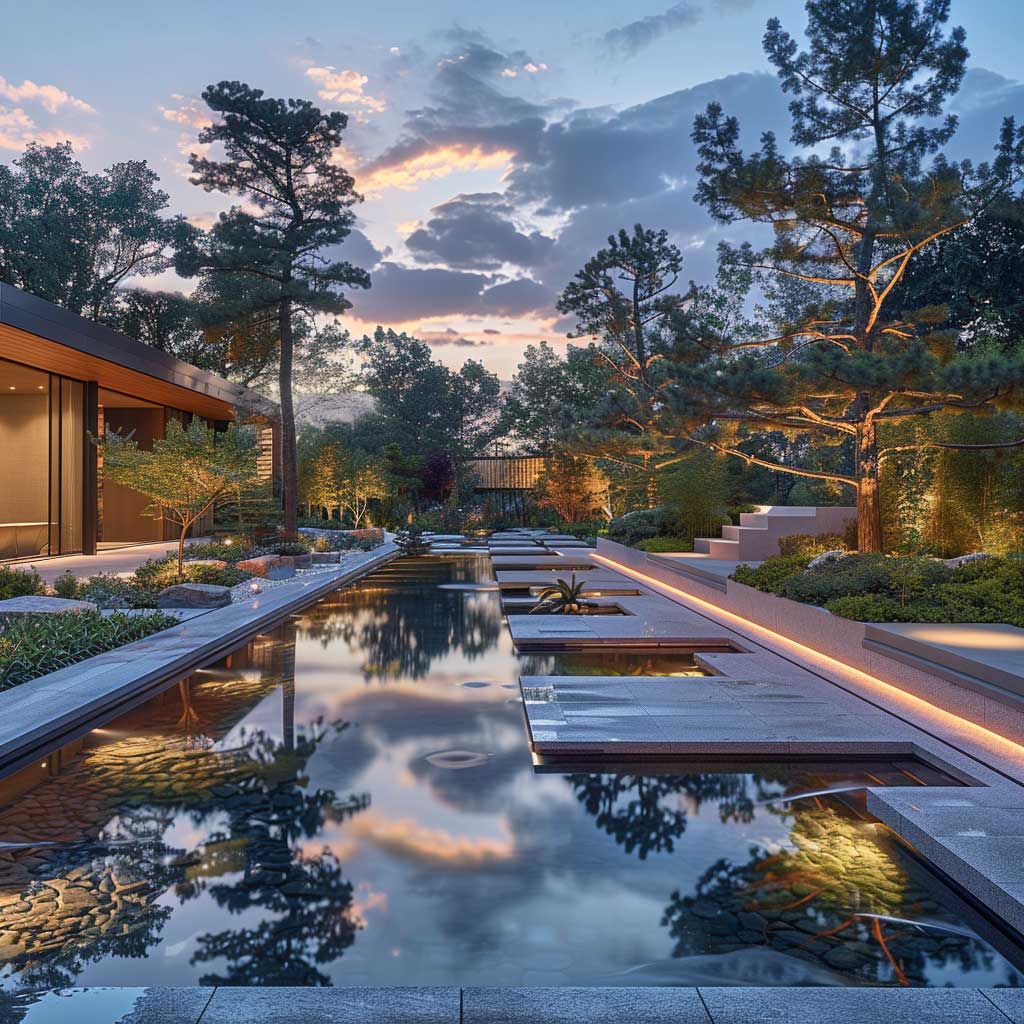
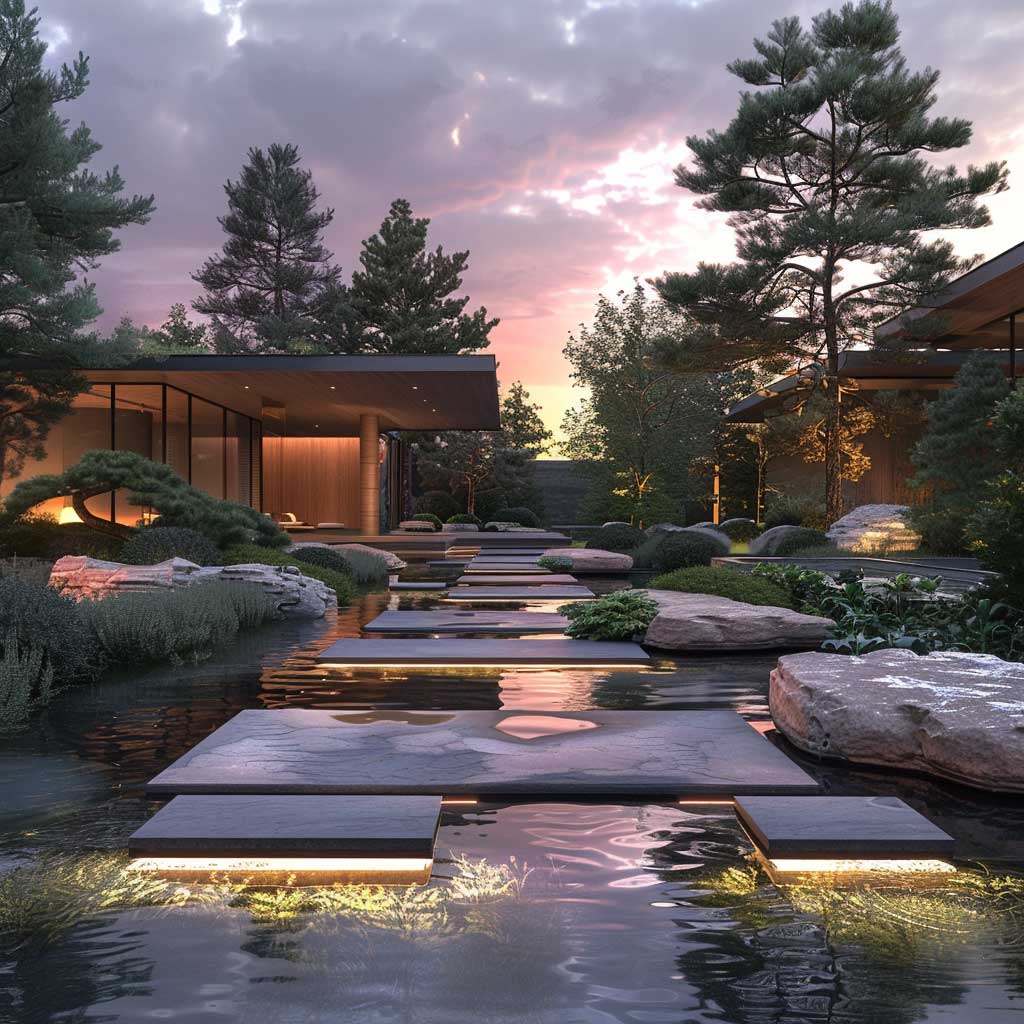

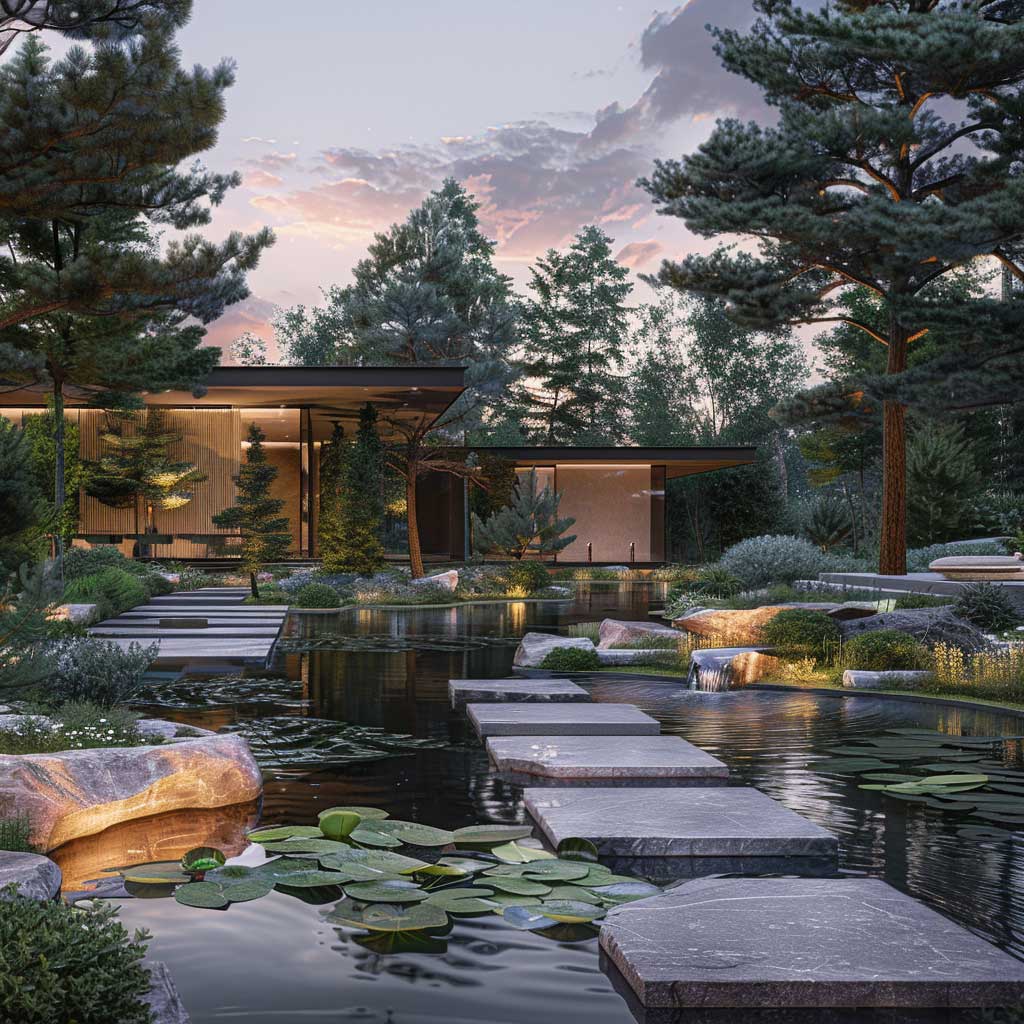
In the world of architectural garden design, the creation of spaces that marry the tranquility of nature with the precision of architecture is a form of art. One such manifestation of this art form can be seen in the design concept where whispering pines stand majestically over serene water features. This design is not just a landscape; it is a narrative that speaks of the balance and beauty achievable when nature is woven into the fabric of our living spaces.
At the heart of this concept is the integration of water and pines, elements that have long symbolized peace and resilience. Water features, with their soothing sounds and reflective surfaces, bring a sense of calm and fluidity to the space. The whispering pines, on the other hand, add a layer of softness and movement, their needles dancing in the wind. Together, these elements do not just coexist; they interact, creating a dialogue between the living and the built.
Architectural garden design thrives on such interactions, aiming to create spaces that are not only aesthetically pleasing but also emotionally resonant. The choice of pines over water features is deliberate, drawing on the trees’ ability to stand tall and unwavering, a contrast to the ever-changing nature of water. This juxtaposition invites contemplation and introspection, making the garden not just a place to be seen but to be experienced.
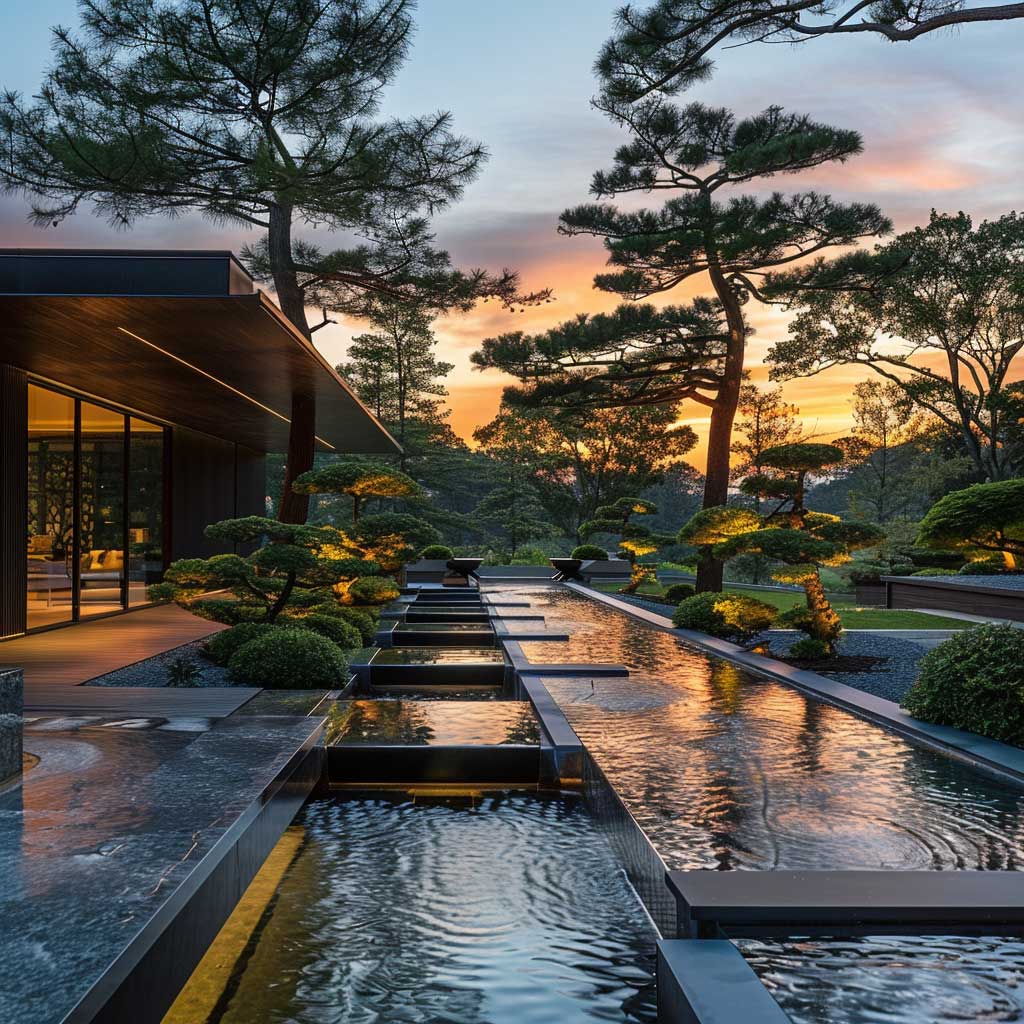
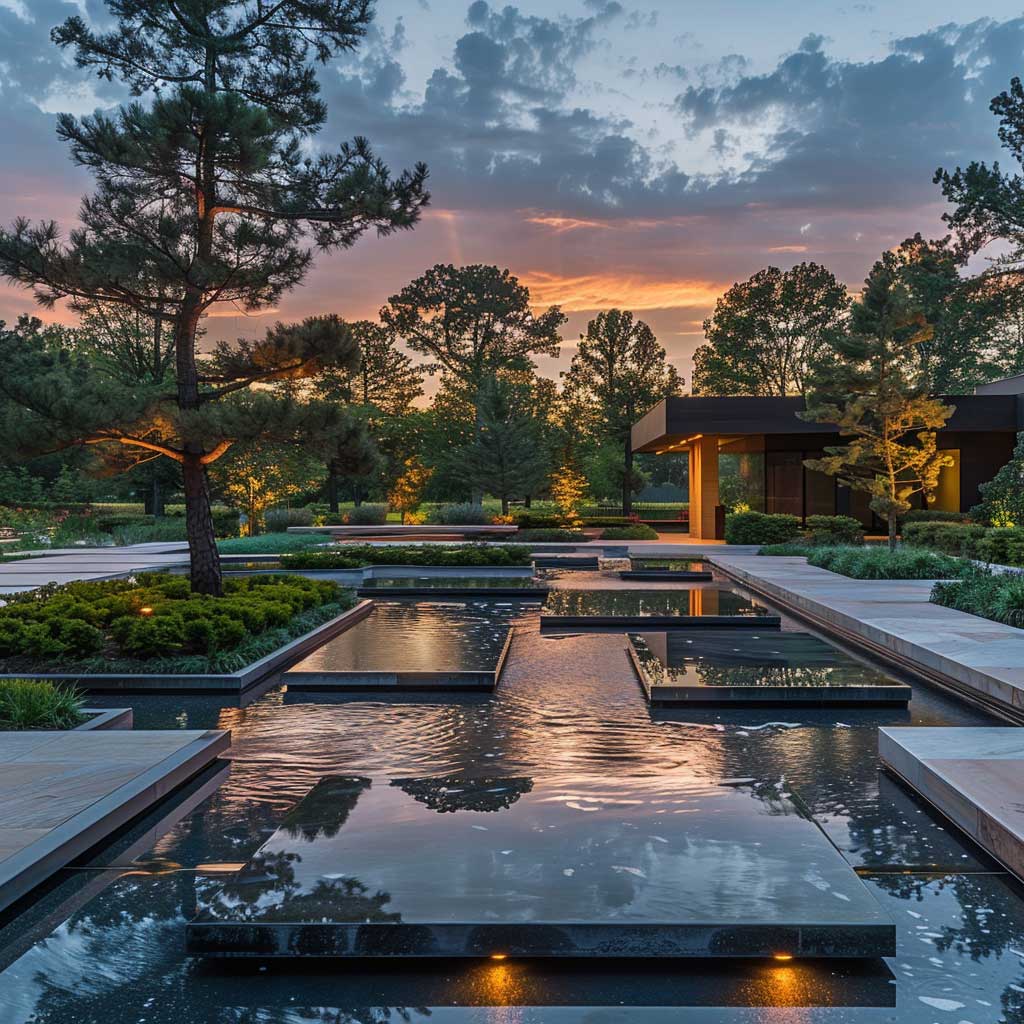


The design also pays homage to sustainability, with the pines acting as natural air purifiers and the water features recycling water through carefully designed systems. This sustainable approach ensures that the garden not only adds beauty to the built environment but also contributes to the well-being of the planet.
In crafting such spaces, architects and designers are challenged to think beyond traditional boundaries, exploring how materials, textures, and elements can come together to create harmony. The result is a space that offers a sanctuary from the hustle and bustle of daily life, a place where one can reconnect with nature without stepping away from the comforts of the modern world.
Sculptural Green Roofs and Living Walls
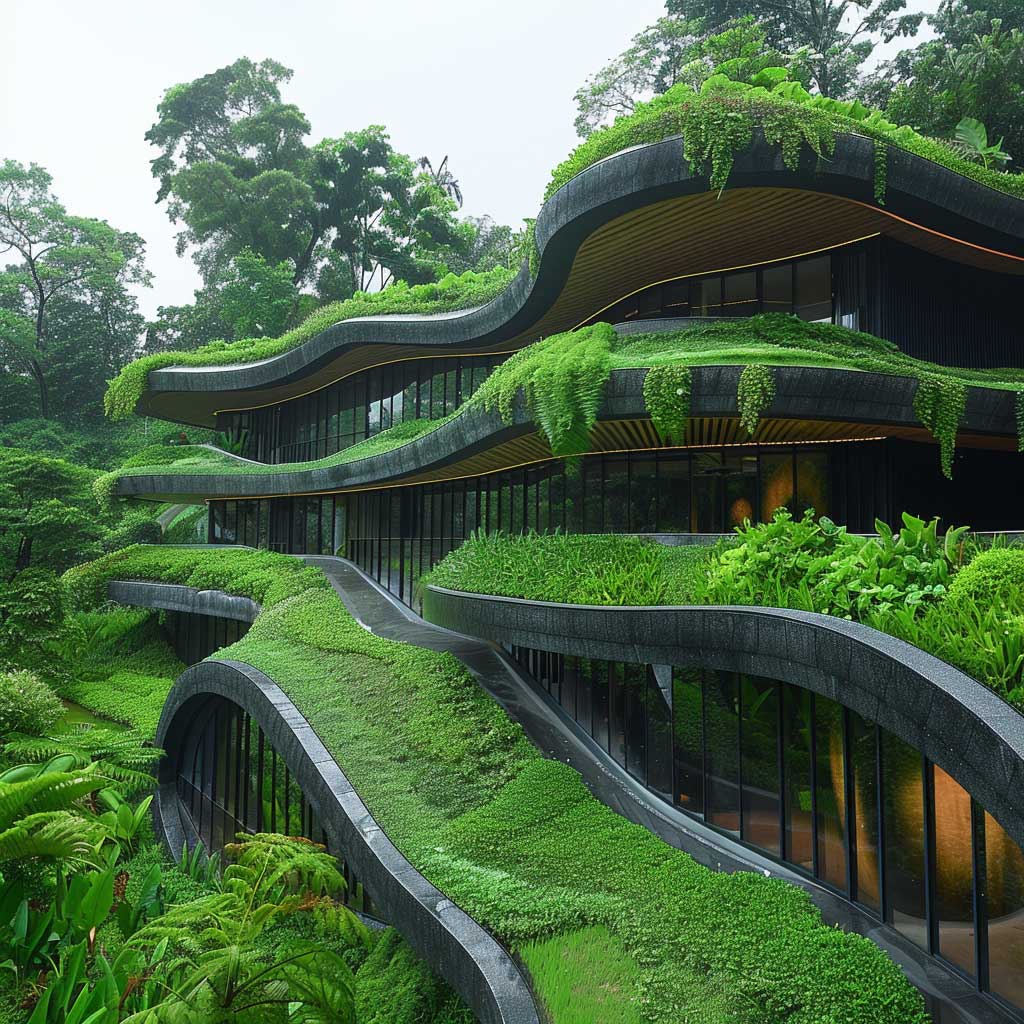

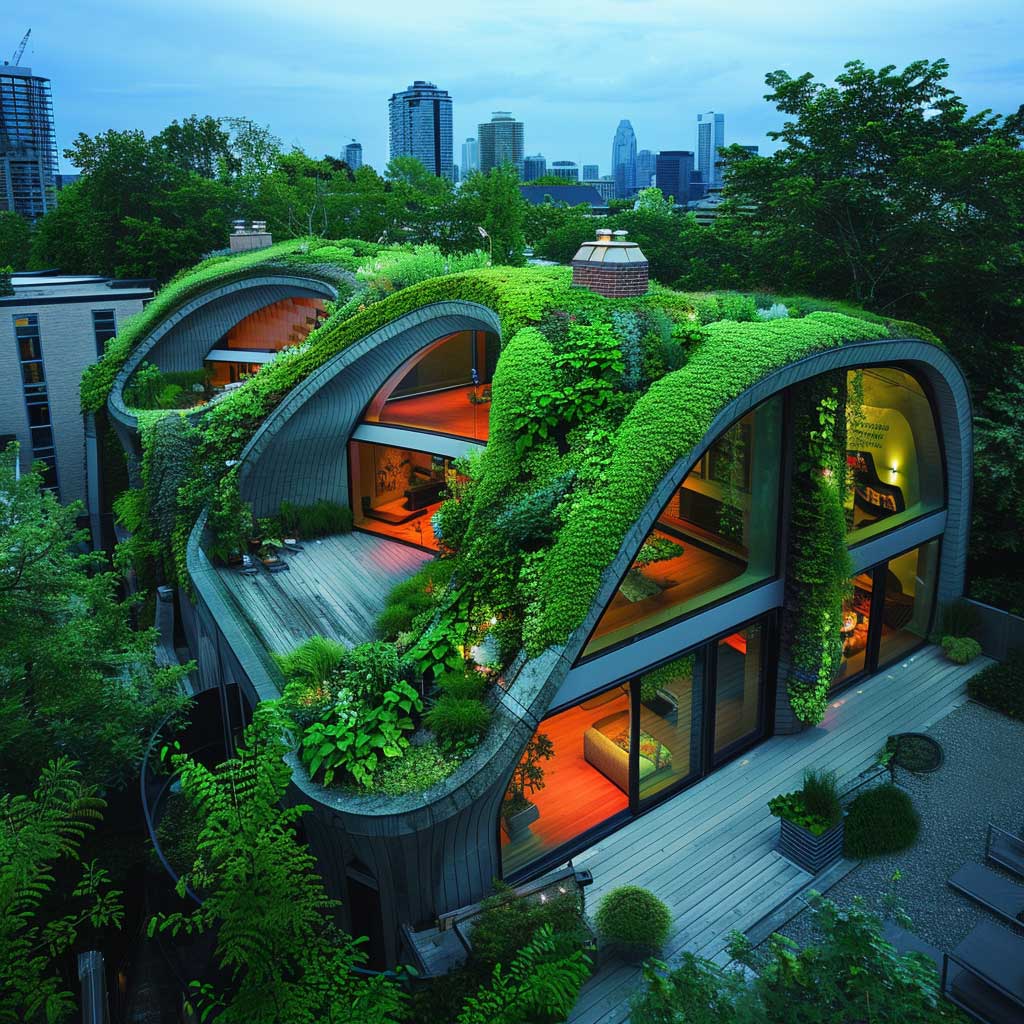
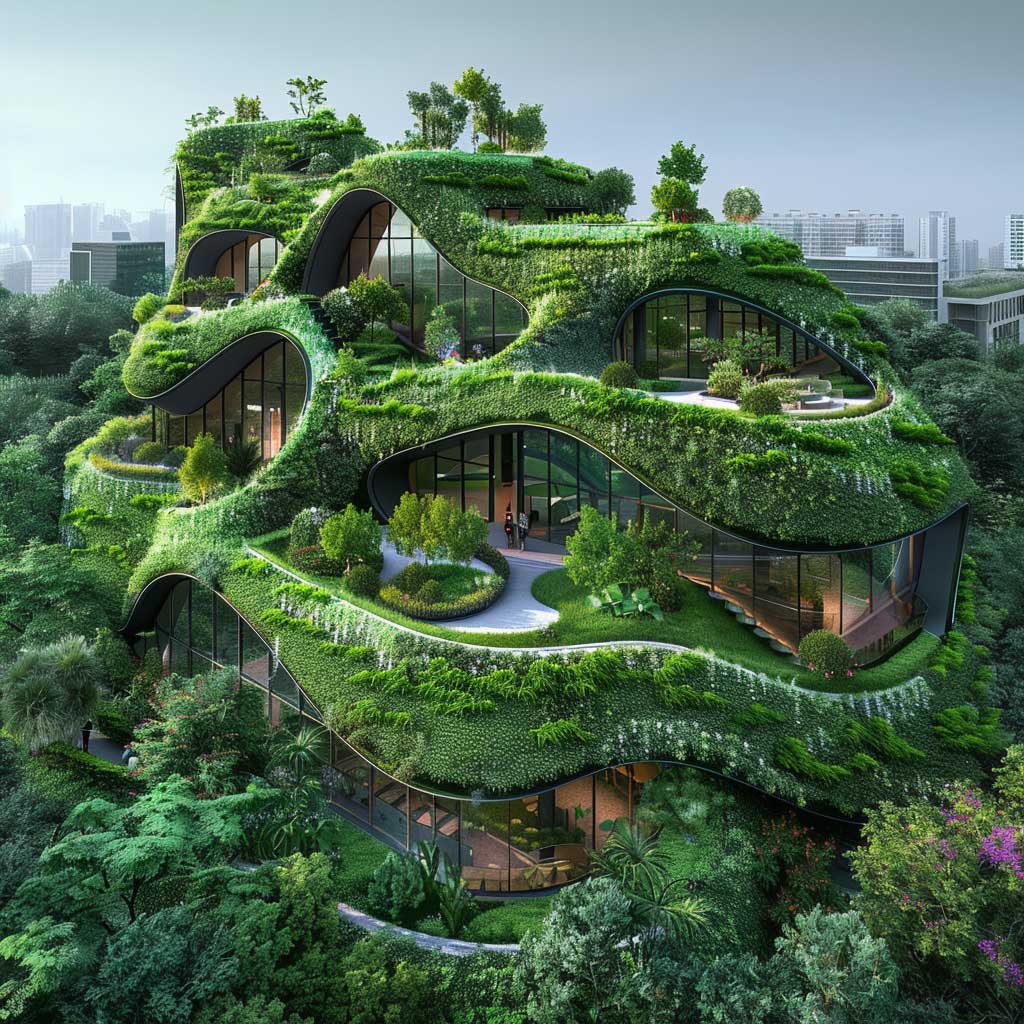
The fusion of architecture and landscape design has given rise to innovative concepts that redefine urban living. Among these, the integration of sculptural green roofs and living walls stands out as a testament to the evolving field of architectural garden design. This concept not only challenges the conventional use of space but also introduces a new dimension of green living into the urban fabric.
Sculptural green roofs transform the often-underutilized spaces atop buildings into lush, verdant landscapes. These living roofs do more than just beautify; they serve as critical components in urban sustainability, offering insulation, reducing runoff, and improving air quality. The sculptural aspect adds an artistic touch, turning the roof into a dynamic landscape that changes with the seasons.
Living walls take this integration further, covering vertical surfaces with foliage that breathes life into concrete and steel. These walls are not just visually striking; they are living ecosystems that contribute to the biodiversity of urban areas. The choice of plants is carefully considered to ensure that they not only thrive in their vertical homes but also provide maximum environmental benefits.
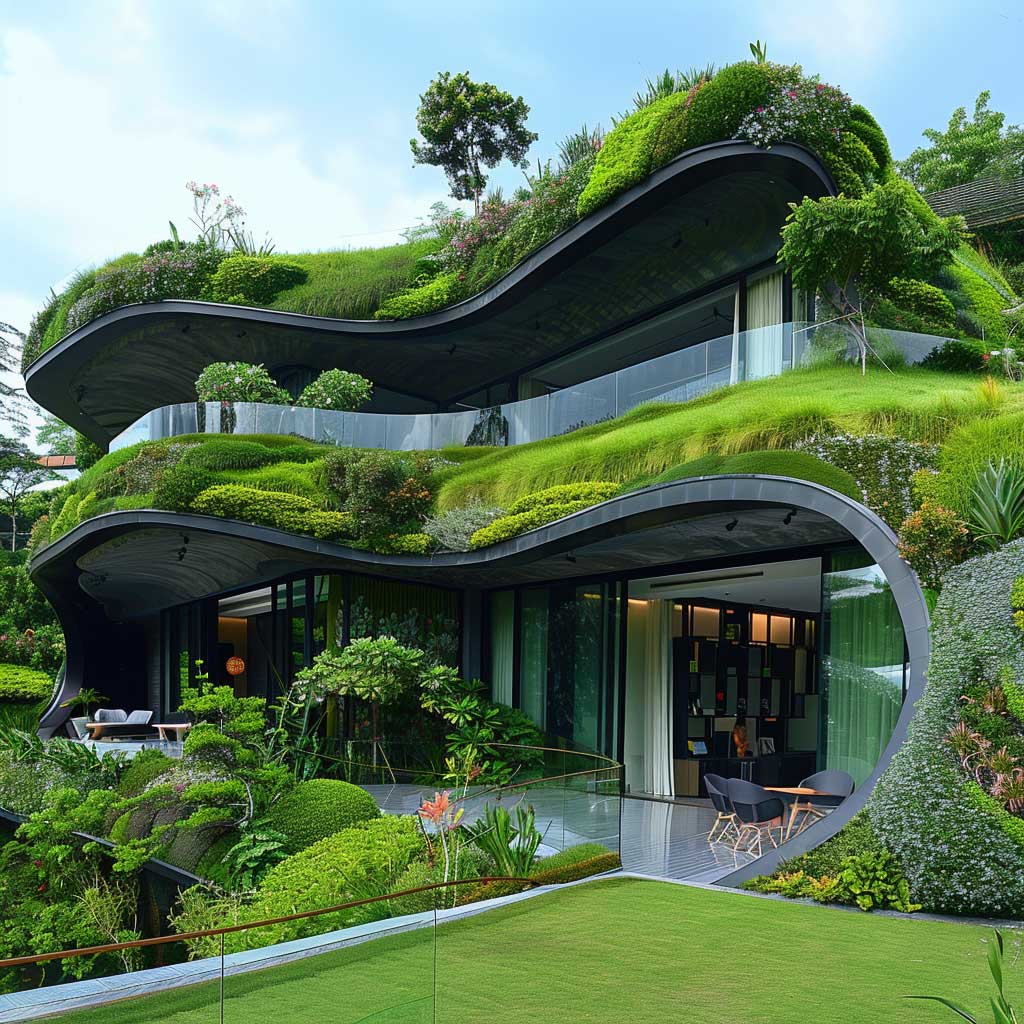



The marriage of sculptural green roofs and living walls in architectural garden design presents a vision of what future cities could look like. It is a vision where buildings are not separate from nature but are part of it, creating a seamless blend of indoor and outdoor spaces. This approach not only enhances the aesthetic appeal of urban environments but also promotes a healthier, more sustainable way of living.
Designing such spaces requires a deep understanding of both architecture and horticulture, as well as a creative mind that can envision the potential of combining these disciplines. It is a complex task, but the results are spaces that redefine our relationship with nature, encouraging us to view our urban environments as living, breathing entities.
Harmony of Hardscape and Softscape
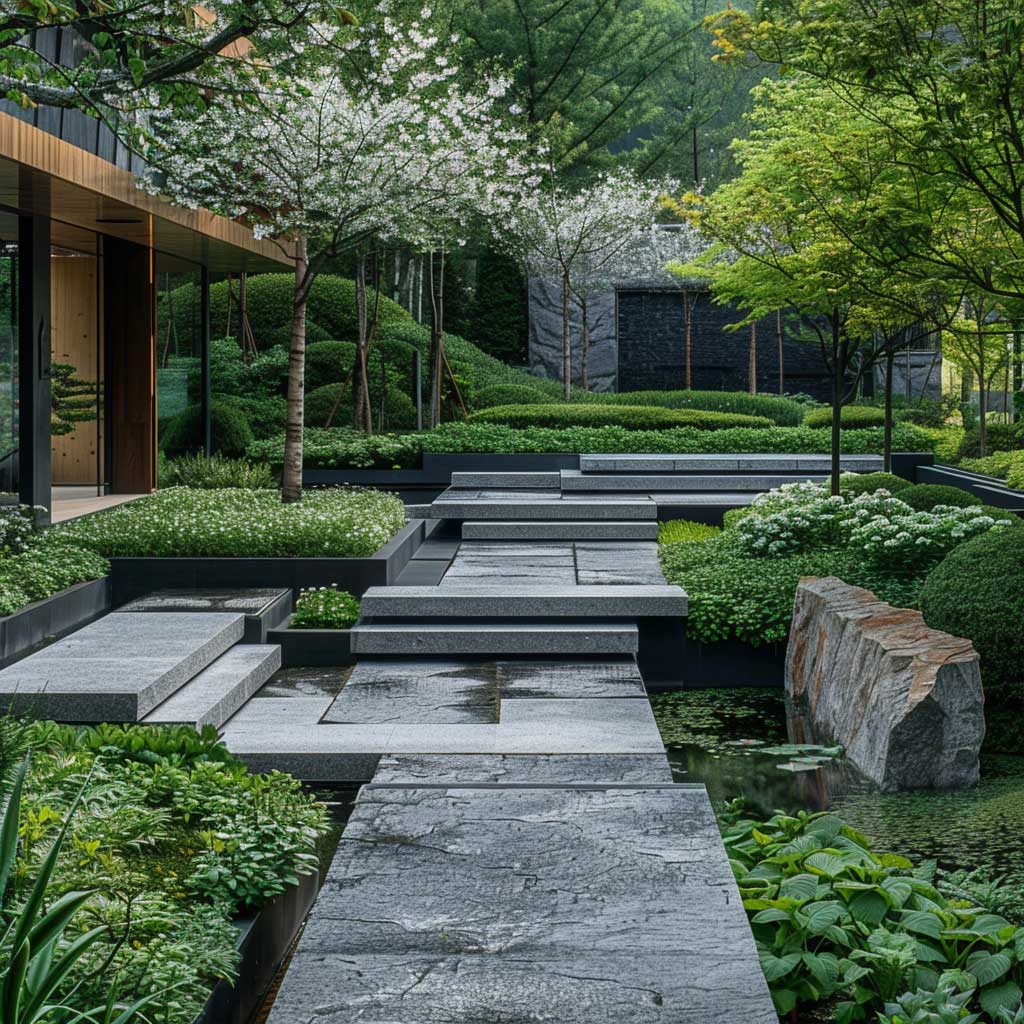



The dialogue between the architectural and the natural is a recurring theme in the design of outdoor spaces. In the realm of architectural garden design, achieving a harmonious balance between hardscape and softscape elements is a delicate art. This balance is crucial in creating spaces that are both functional and inviting, where the rigidity of man-made structures is softened by the organic beauty of nature.
The concept of blending hardscape with softscape involves a thoughtful arrangement of materials and plants, where each element is chosen for its aesthetic appeal and its ability to complement the others. Hardscape components, such as stone pathways and geometric structures, provide the framework for the garden, defining spaces and guiding movement. Softscape elements, on the other hand, fill these spaces with life, adding color, texture, and fragrance.
This interplay between hard and soft creates a dynamic landscape, one that changes with the seasons and evolves over time. The architectural elements remain constant, offering a sense of stability and permanence, while the living elements bring variability and spontaneity. This contrast is what makes the garden interesting, providing a rich sensory experience that invites exploration and discovery.




Achieving harmony in architectural garden design is not just about aesthetics; it is also about functionality. The design must consider how the space will be used, ensuring that it meets the needs of its inhabitants while also respecting the environment. It is about creating a space that is not only beautiful but also sustainable and resilient.
In the end, the goal of blending hardscape and softscape is to create a space that feels natural and effortless, as though it were always meant to be. It is a testament to the designer’s skill and vision, a space that reflects the beauty of nature while also celebrating human creativity and ingenuity.
The integration of gardens with architecture represents a profound understanding of how spaces can influence our well-being, our connection to nature, and our environmental footprint. This approach to design invites us to reconsider the boundaries between the built and the natural, encouraging a future where these elements are not seen as separate but as parts of a whole that can thrive together. As we move forward, the principles of architectural garden design will undoubtedly continue to inspire innovation, leading to more sustainable, beautiful, and integrated living environments.












